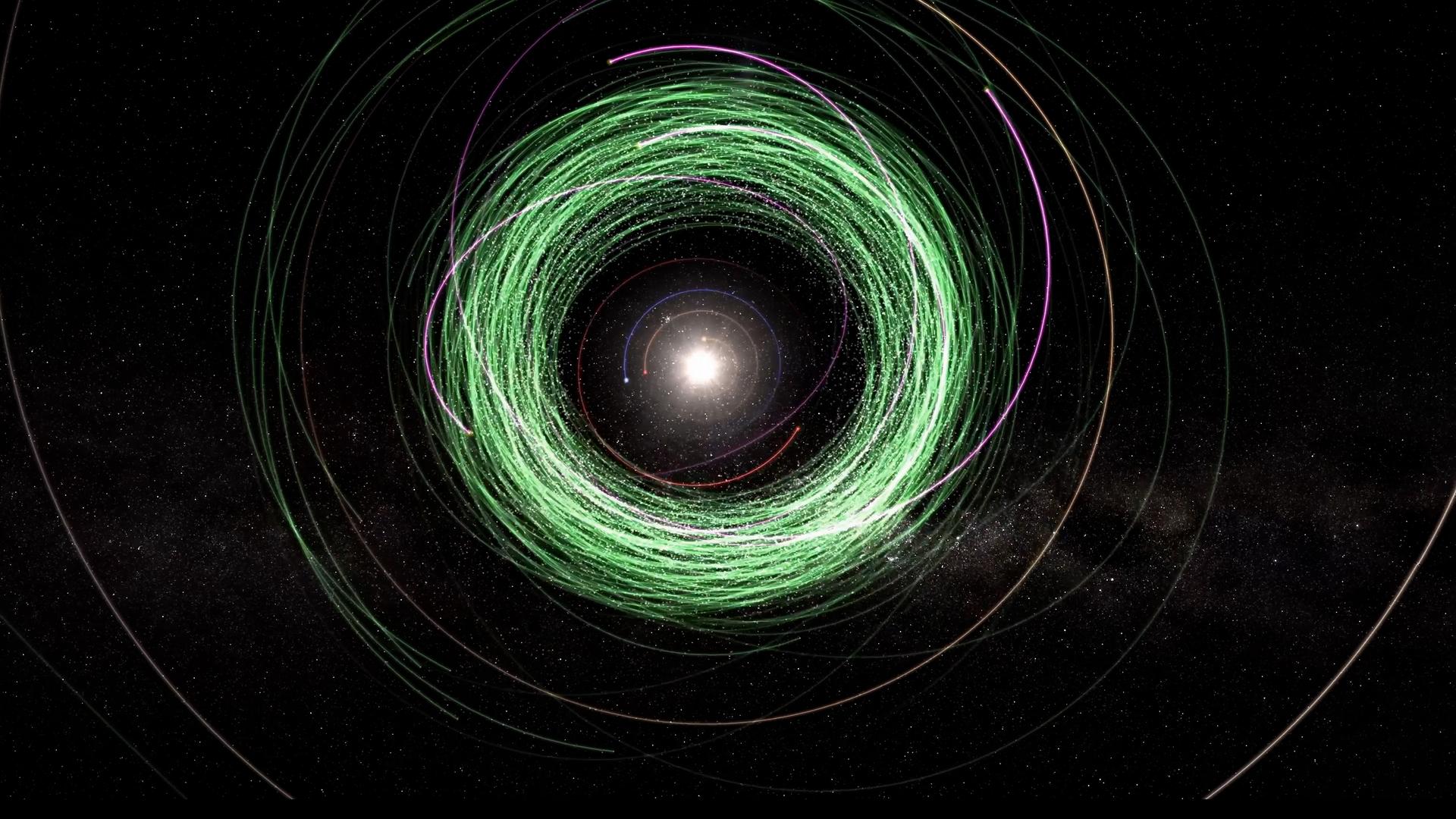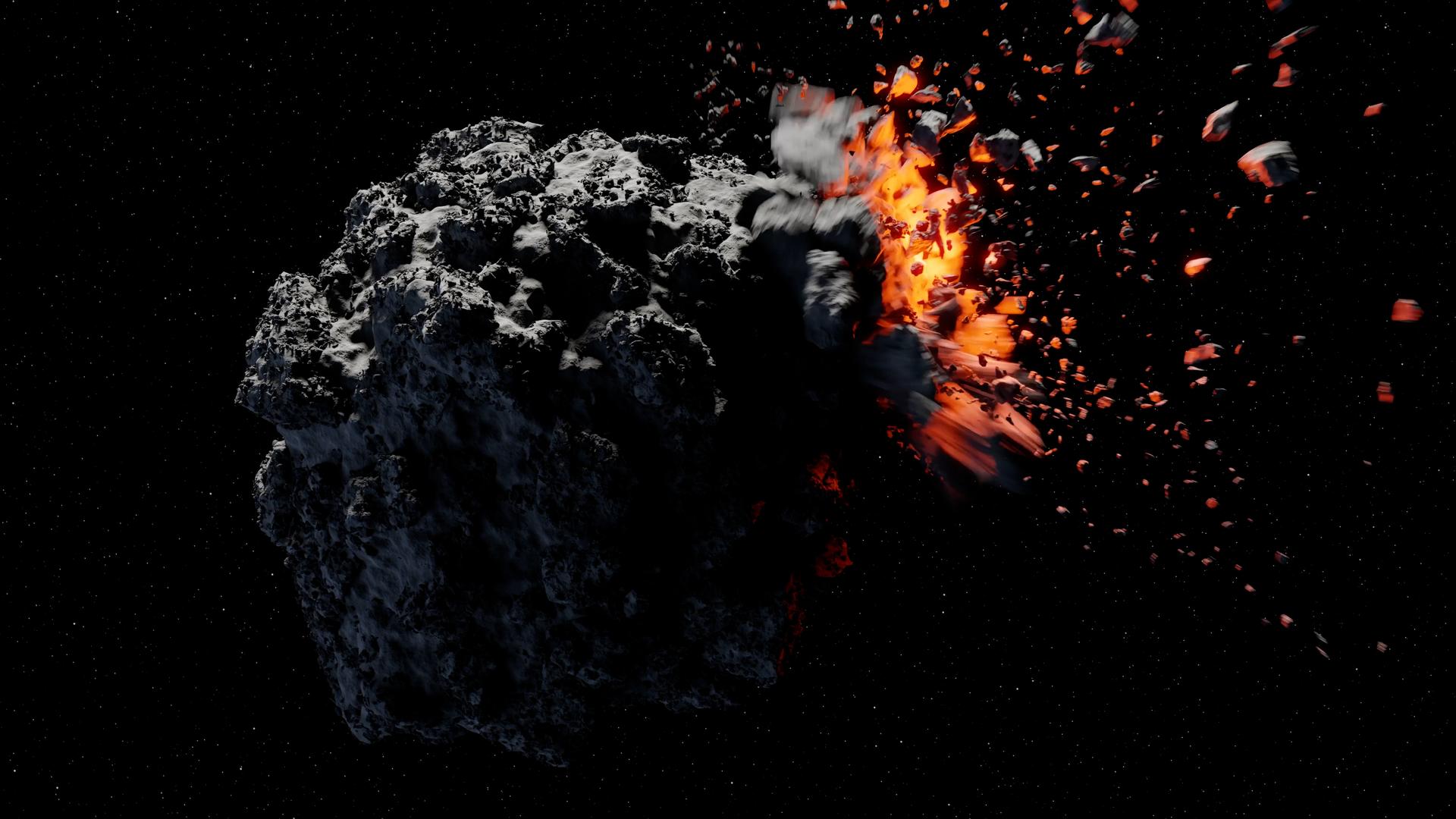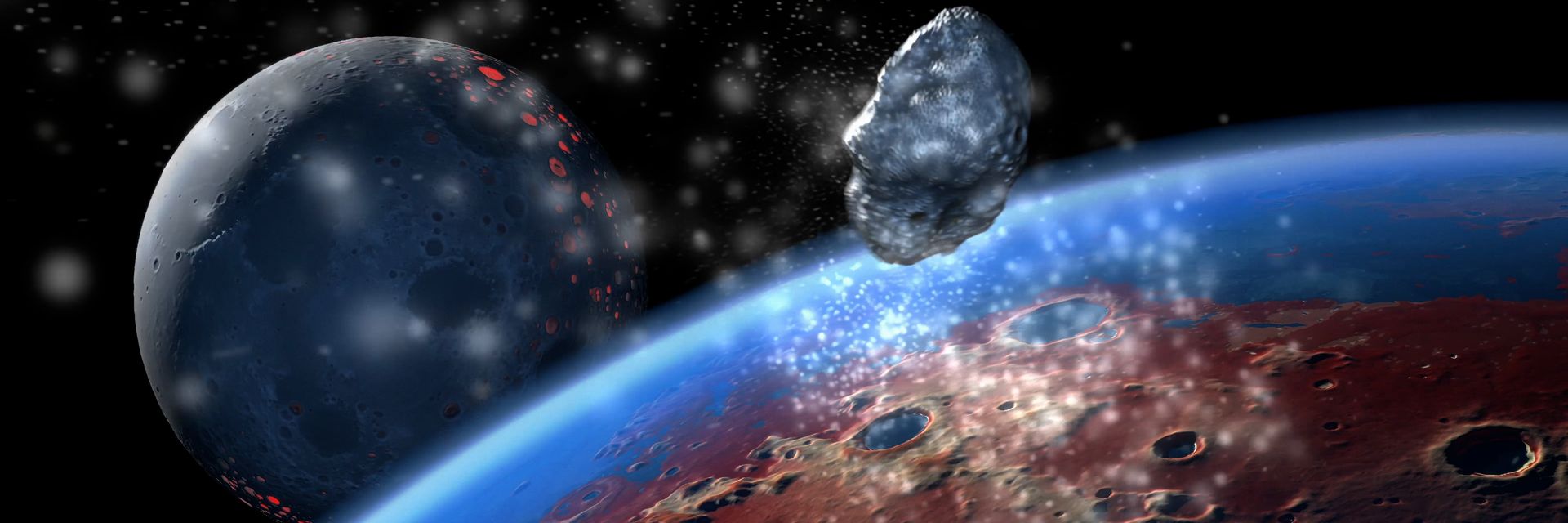Earth faces a real, albeit remote, risk of extinction by asteroid impact. Though we currently have no defense, scientists are hard at work on planning for the eventuality of a collision.
◊
The clock is ticking on what cosmologist Stephen Hawking called “one of the major threats to intelligent life.” The problem is, no one knows how long till the alarm sounds. The only thing certain is that we’ll have to face it at some point in our future – assuming we even last that long.
Somewhere in our Solar System, there’s an asteroid with our name on it. It hasn’t yet been identified or located, so we don’t know any of its characteristics, such as how big it is, where it will impact our planet, or its speed. Worse, we currently have no defense against its destructive capability. And if you’ve seen the 2021 comic thriller Don’t Look Up, you know the consequence of underestimating the threat or bungling our response: total annihilation.
Luckily, there is a cadre of scientists worldwide whose priority is to come up with a portfolio of potential responses to a credible, specific threat of an asteroid impact. These scientists, working with government agencies and private organizations, are attempting to develop strategies to combat the danger, either by avoiding a crash or mitigating its effects. The questions remain, though: Will it be enough, and do we have enough time?
Killer Asteroid 4K, a MagellanTV original, premieres 6/30/2022.
Setting Up a Framework for Defense
In April 2021, the International Academy of Astronautics (IAA) sponsored its seventh in a series of biannual Planetary Defense conferences. The IAA, an independent body supported by the United Nations, NASA, and other organizations, presented an array of practical ideas at the conference. Participants considered how to plan for Earth’s safety from a cataclysmic attack, not by aliens but by natural threats: comets, asteroids, and other Near-Earth Objects, or NEOs.
Experts discussed preparations for a potential impact from a known, or possibly unknown, NEO. They concluded that cooperation and coordination among international agencies would be essential to resolve the threat and avoid a collision, and they counseled that these agencies would need at least five to 10 years to mount an effective response. They warned that much work remained to be done, as there is no infrastructure – and no current funding – for countering an extinction-level threat posed by a NEO.
However, the future need not be as grim as you might surmise. A variety of organizations are actively at work on developing a conceptual structure – planning for a plan, if you will – to deal with such threats should they (or when they) appear. In 2018, the U.S. National Science and Technology Council published a report outlining a plan to guide advance preparation titled the National Near-Earth Object Preparedness Strategy Action Plan. This report presented a 10-year program “to effectively manage the risks associated with NEOs.”
Don’t panic! Of the 28,266 known NEOs, a number that increases by approximately 30 new asteroids weekly, none has more than a 1-in-500,000 chance of impacting Earth in the foreseeable future.
In addition, MIT released a position paper in 2020 that introduced its own approach to asteroid deflection – a “decision map” for selecting how best to approach each threat, given the wide variety of types of asteroids potentially headed our way. It considers three key variables:
- The mass and momentum of the asteroid;
- Its proximity to what MIT describes as a “gravitational keyhole”; and
- The warning time available.
Clearly, the threat to our survival of an encounter with a NEO will depend on time, planning, resources, and, above all, international cooperation.
How to Approach a Planetary Crisis
Have you ever seen Bill Nye, the Science Guy? His plain-spoken approach to communicating the intricacies of science and technology has made him a favorite of American children as well as adults. Since the 1990s, through his self-named program and his many television appearances, he’s explained science concepts in an amusing and understandable way.
Well, Bill Nye has a new gig, and he too is dedicated to simplifying and explaining the threat of NEOs. He is the CEO of the Planetary Society, an organization dedicated to, among other things, defending Earth from outer-space extinction-level events. Nye advocates planning now for a threat that may not arrive for centuries or even millennia. His society breaks down the approach to the threat into two main parts: First, we must find as many asteroids as possible that may someday cross paths with Earth; then, once the actual threat and timeline are better understood, the scientific community and policymakers must coordinate a response.

Orbits of known Potentially Hazardous Asteroids (PHAs), numbering over 1,500. (Credit: European Space Agency)
5 Steps to ‘Killing’ a Killer Asteroid
The Planetary Society has published its plan in a document titled “Five Steps to Prevent Asteroid Impacts.” The five steps are easily summarized, though broad-reaching:
- Detect as many asteroids as possible whose trajectories cross paths with Earth’s orbit;
- Track all known NEOs we will potentially encounter;
- “Characterize” the NEOs by establishing, in as much detail as possible, each one’s structure, shape, speed, and severity of threat;
- Resolve an identified threat by destroying the object or at least shifting its trajectory out of harm’s way; and
- Coordinate the response and lead a broad-based education strategy to inform people of the importance of preparing – and funding – an effective plan.
It’s step no. 4 that will require the most advanced technological preparation to be effective. Remember, no infrastructure currently exists to counter an asteroid that may slam into the planet. But many scientists have thought deeply about how we would meet and defeat the threat of impact. And, as you’re about to read, they’ve come up with four big ideas for defending against a calamitous smash-up.
4 Technological Approaches to Deploy in Outer Space
1 – Kinetic Impactor
In late November 2021, a NASA spacecraft was launched from Vandenberg Space Force Base in California. Its objective is a grand experiment to find out whether we now have the technology to deflect an asteroid and change both its speed and direction. This mission, the Double Asteroid Redirection Test (DART), will be the first real-world assessment of a planetary defense system.
The means it will employ, once it reaches its target in late 2022, is termed a “kinetic impactor.” Basically, the spacecraft is designed to slam into its selected target, a small asteroid called Dimorphos, to knock it out of its current orbit around its larger asteroid partner, Didymos. If calculations are correct, the DART spacecraft will push Dimorphos toward Didymos, causing its orbit to shrink and its speed to increase. That would mean we have the capability to affect the trajectory of a NEO and possibly avert a destructive collision.

Artist’s rendering of the aftermath of a spacecraft’s impact with an asteroid. (Credit: James Arthurs)
2 – Slow Gravity Tractor
Another potential approach to stopping an impact threat involves a “slow gravity tractor,” which would use gravity to attract a wayward asteroid toward a spacecraft, pulling it away from an Earthbound trajectory.
3 – Laser Ablation
This approach, called “laser ablation,” would use a swarm of small, laser-equipped craft – which Nye terms “laser bees” – to vaporize the rocky surface of an asteroid, thereby changing its mass and its path.
4 – The ‘Nuclear Option’: Nuclear Ablation
Nuclear ablation would use a nuclear warhead in space – currently a violation of international space law – to “nudge” an asteroid into a course away from Earth. This approach would detonate a nuke not on the asteroid but in its vicinity. The result would be a pummeling of the surface of the object that would blast some of its particles into space, creating a vapor jet off its surface that would shift its trajectory. Rather than exploding the NEO outright and raining smaller chunks of rock directly at Earth, thereby multiplying our problems, nuclear ablation would keep much of its mass intact and safe from harming the planet.
Is It Safe to ‘Look Up’?
What do we have to look forward to in the search for a killer asteroid, and the means to avoid it? In addition to DART, a massive new telescope and observatory is under construction in Chile that will be used to map and catalog many more NEOs than are currently known. This site, a joint project of the U.S. National Science Foundation and private investors, is named the Vera C. Rubin Observatory (formerly known as the Large Synoptic Survey Telescope). It is expected to increase our knowledge of potentially hazardous asteroids by as much as 100-fold. With full operations anticipated by the end of 2024, the observatory is well-positioned to guide our ability to plan for impacts in greater detail than is currently possible.
And in 2026, NASA is scheduled to launch an infrared, space-based telescope, the NEO Surveyor, which will use heat detection to locate unknown asteroids that may pose a threat. This will replace NEOWISE (NEO Wide-field Infrared Survey Explorer), which has been in operation since 2009.
All this adds up to a lot of activity on the NEO front. Though we can be reasonably certain there will be no major impact activity on Earth in our lifetimes, it still offers comfort to those concerned about the future threat to our descendants. And if we manage to survive all the other threats to our planet’s well-being – from ecological destruction to nuclear winter – we can hope for the success of the scientists who will eventually be responsible for developing the means to protect our planet from death by asteroid.
Ω
Kevin Martin is Senior Writer for MagellanTV. He writes on a wide variety of topics, including outer space, the fine arts, and modern history. He has had a long career as a journalist and communications specialist with both nonprofit and for-profit organizations. He resides in Glendale, California.
Title Image: Artist’s rendering of an asteroid before impact with our planet. (Credit: James Arthurs)

